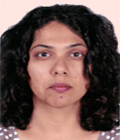
|
Sheetal D Marathe
Senior Researcher
University of Stuttgart
Germany
Biography
The author is a researcher at the Institute of Energy Economics and the Rational Use of Energy, University Stuttgart. She studied Civil Engineering (B.E.) at the University of Mumbai and finished her M.Sc. in Water resources and Engineering Management at the University Stuttgart. Her current research focuses on analysis and assessment of land-use patterns and energy related scenario analysis in the developing countries. She has conducted several projects at regional and International level to investigate the environmental and economic aspects of renewable energy and their potential.
Abstract
Mapping Gauteng's Renewable Energy Potential: A GIS-Based Analysis
Co-Authors: Matthias Woerner, Thomas Telsnig, Marlies Haerdtlein, Christoph Kruck, Ludger Eltrop
South Africa's electricity production is mostly coal based which results in high greenhouse gas emissions. In order to reach the mitigation targets, South Africa needs to increase the share of renewable energy in their energy mix. Lack of information on the potential of renewable energy is one of the biggest obstacles to overcome this issue. Various spatial planning regulations at the national, provincial and local level in South Africa have mentioned use of renewable energy in the future. This study area of this paper is the powerhouse of South Africa, Gauteng province as it consumes the most amount of energy in the country. To support the use of renewable energy in Gauteng and to raise the awareness in the region it was important to analyse the available renewable energy potential in Gauteng. The main objective of this paper was mapping and calculating Gauteng's renewable energy potential. This paper presents the results of a GIS-based analysis at the provincial (Gauteng) level, which was carried out for calculating the technical potential of renewable energies for the three energy carriers: wind, biomass (wood and energy crops), and solar. The solar energy is further divided into four categories according to the technology used: concentrated solar power (CSP), photovoltaic (PV) and solar water heaters (SWHs). These estimates do not take costs, current or future energy demand, and relevant policies into consideration. Land-use constraints used for each technology are not exclusive for each technology, i.e. the same land area is used to estimate the potential of multiple technologies. Furthermore, as the technologies evolve, these technical potential may also change. The policy makers can use this analysis to create region based policies for renewable energies in the local communities. Furthermore, it can also be used by developers, planners to integrate renewable energy solutions in the new settlements and especially the communities can use the data at the local level to obtain specific solutions (e.g. SWH) for households.
|

